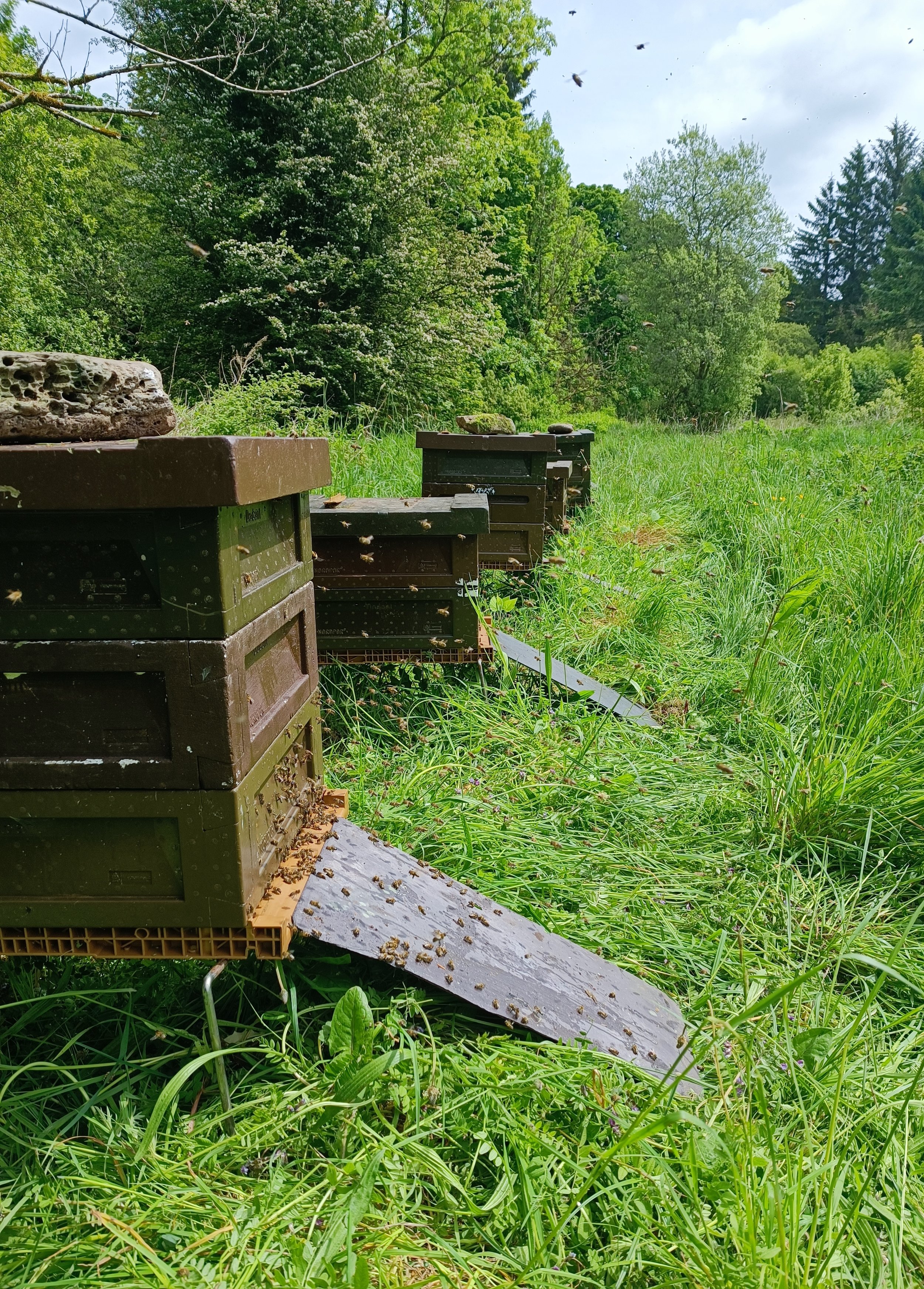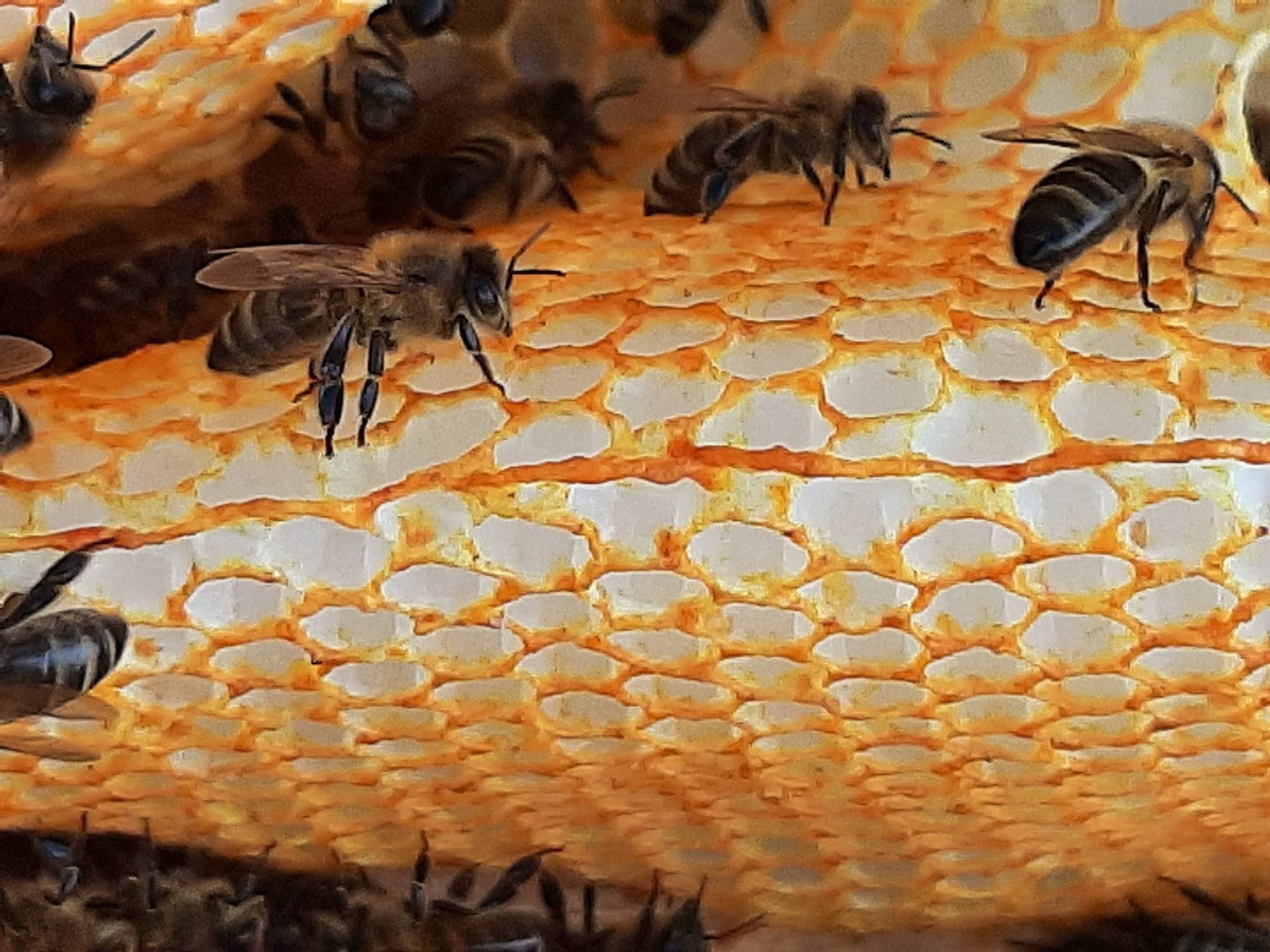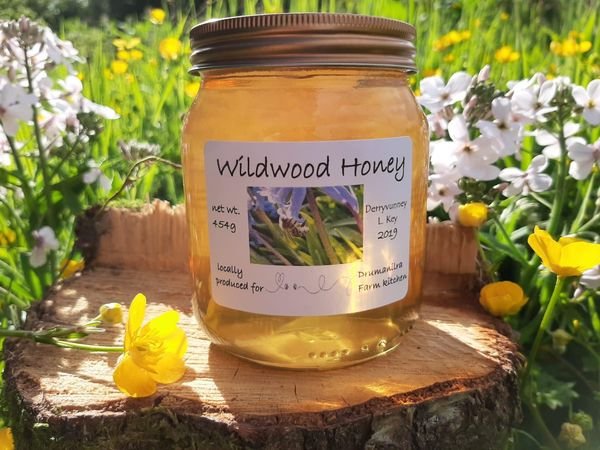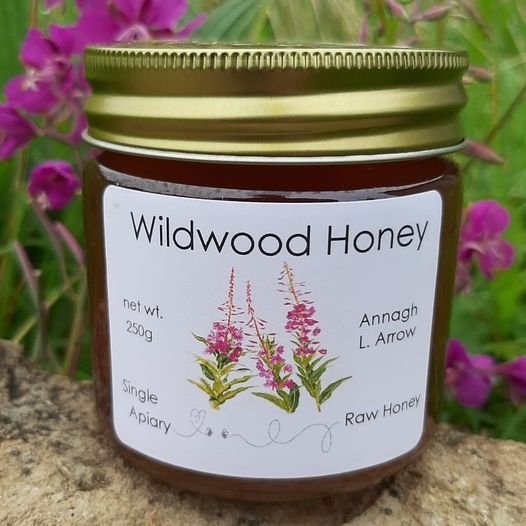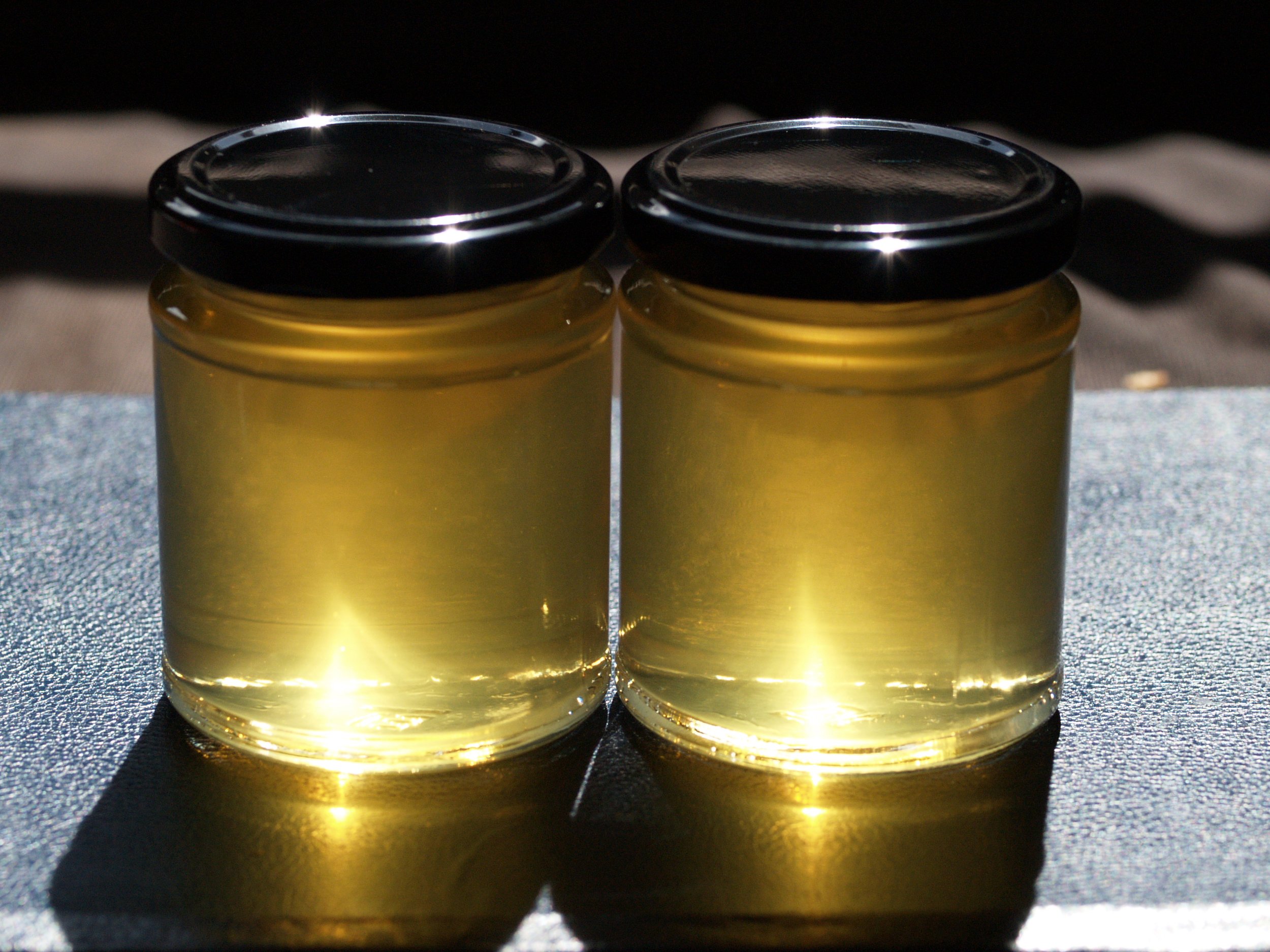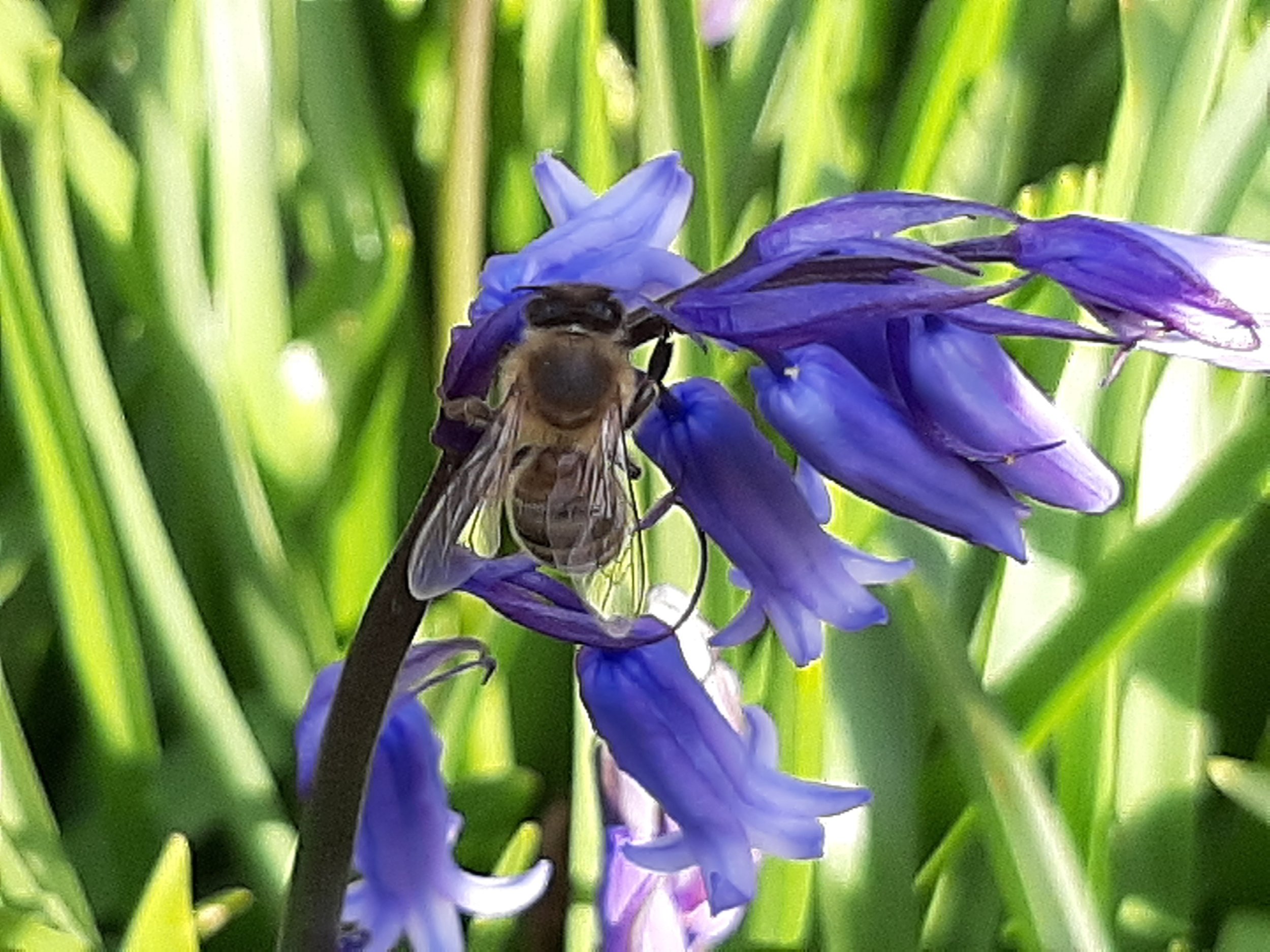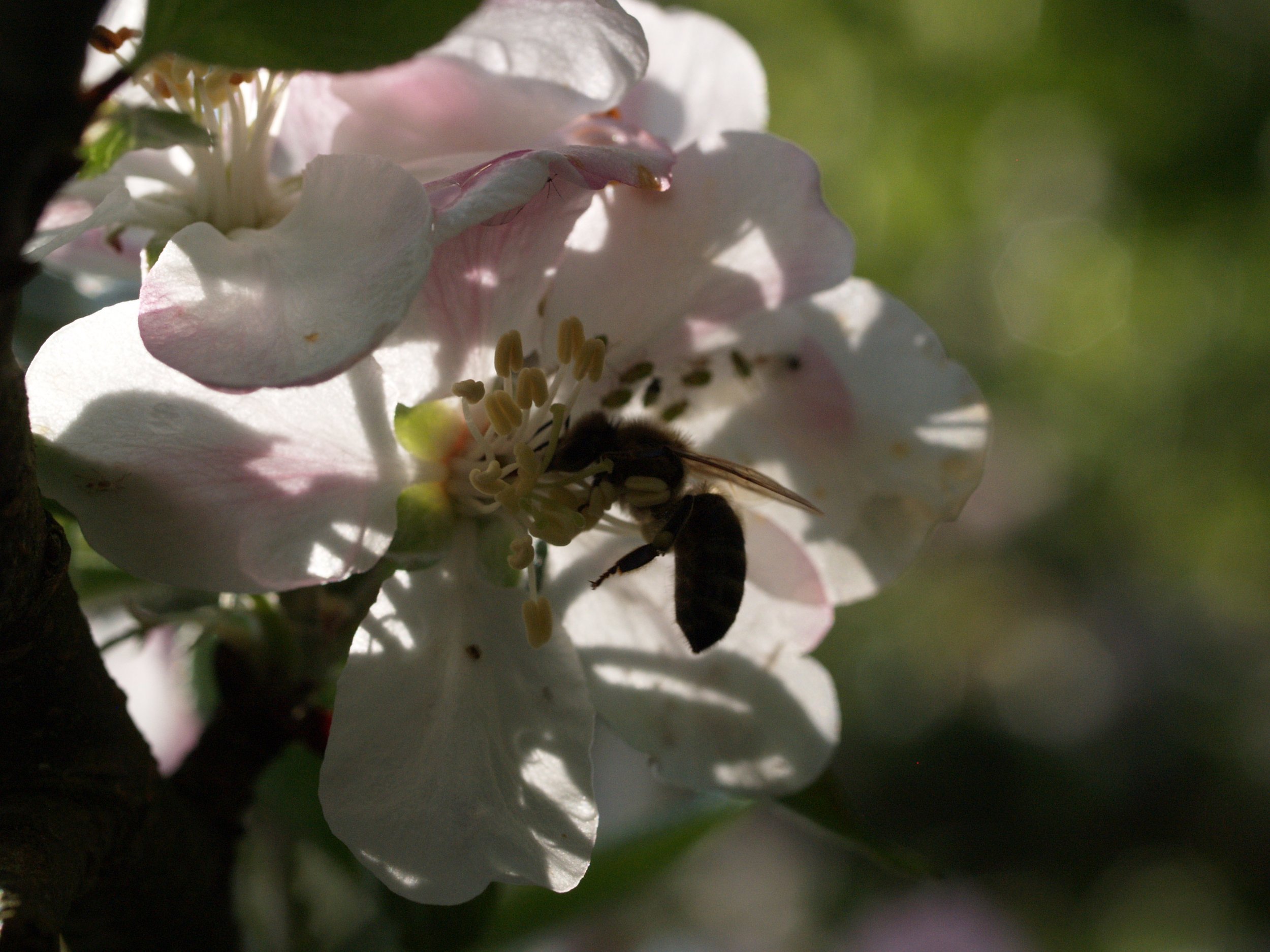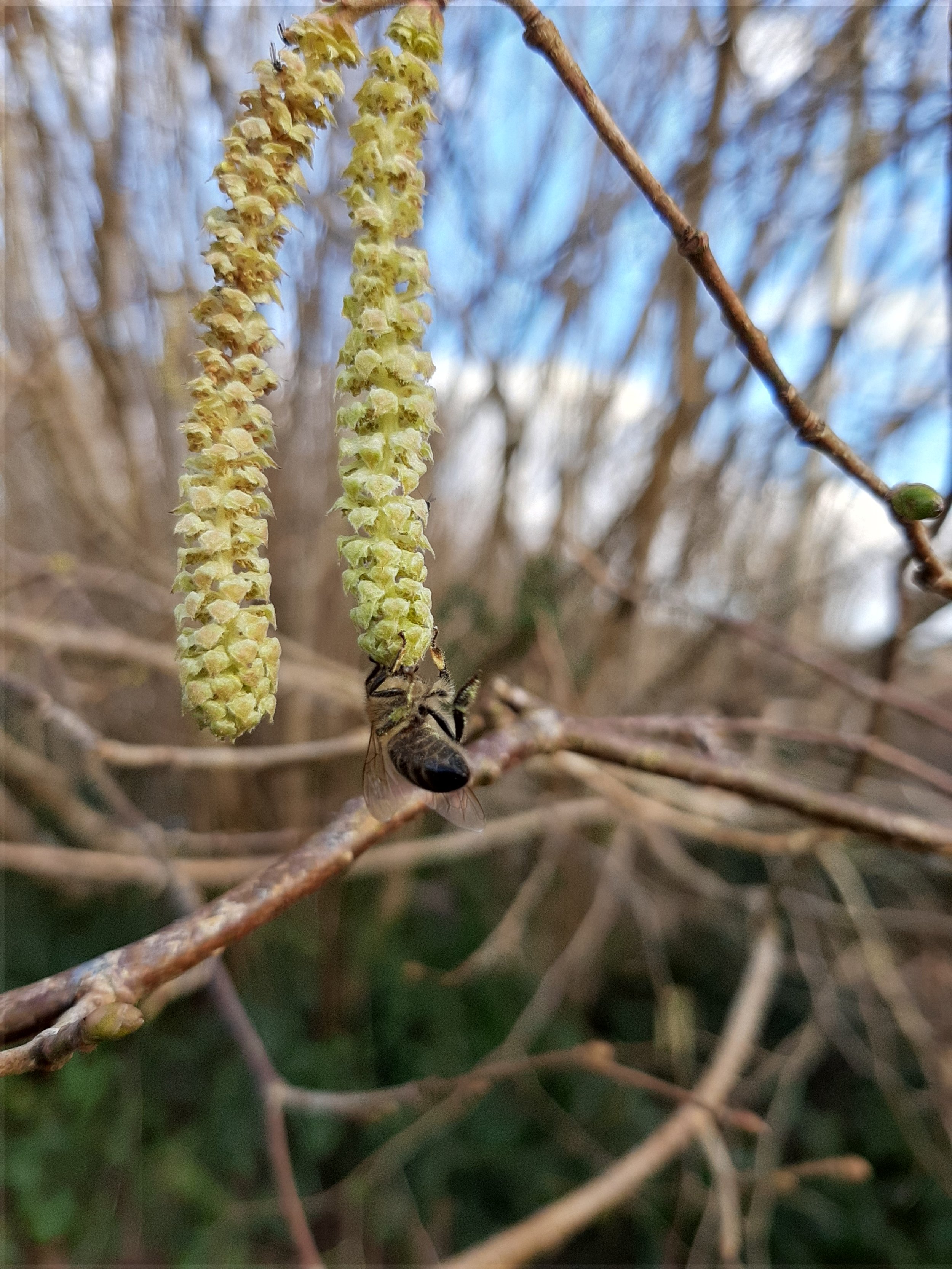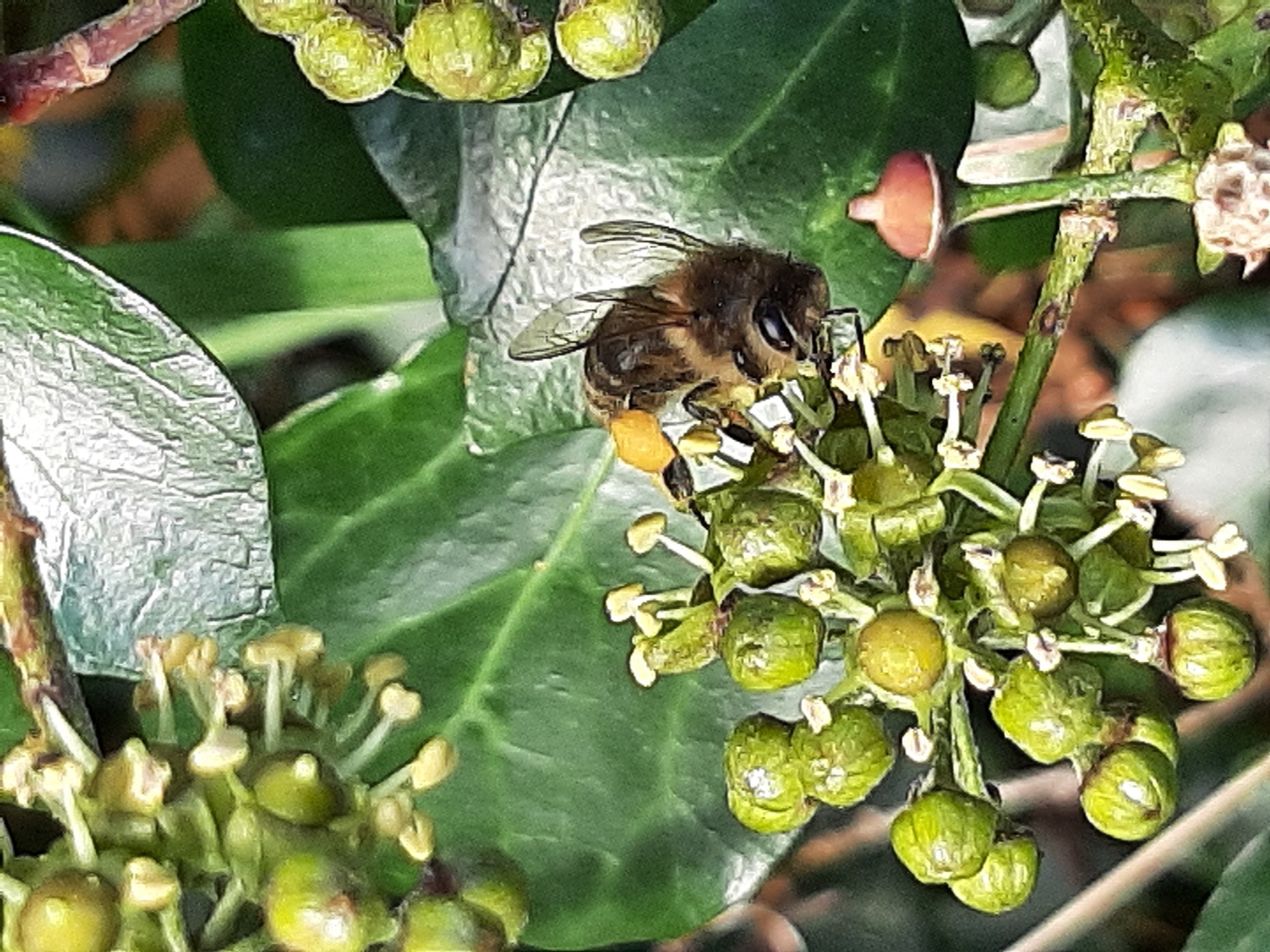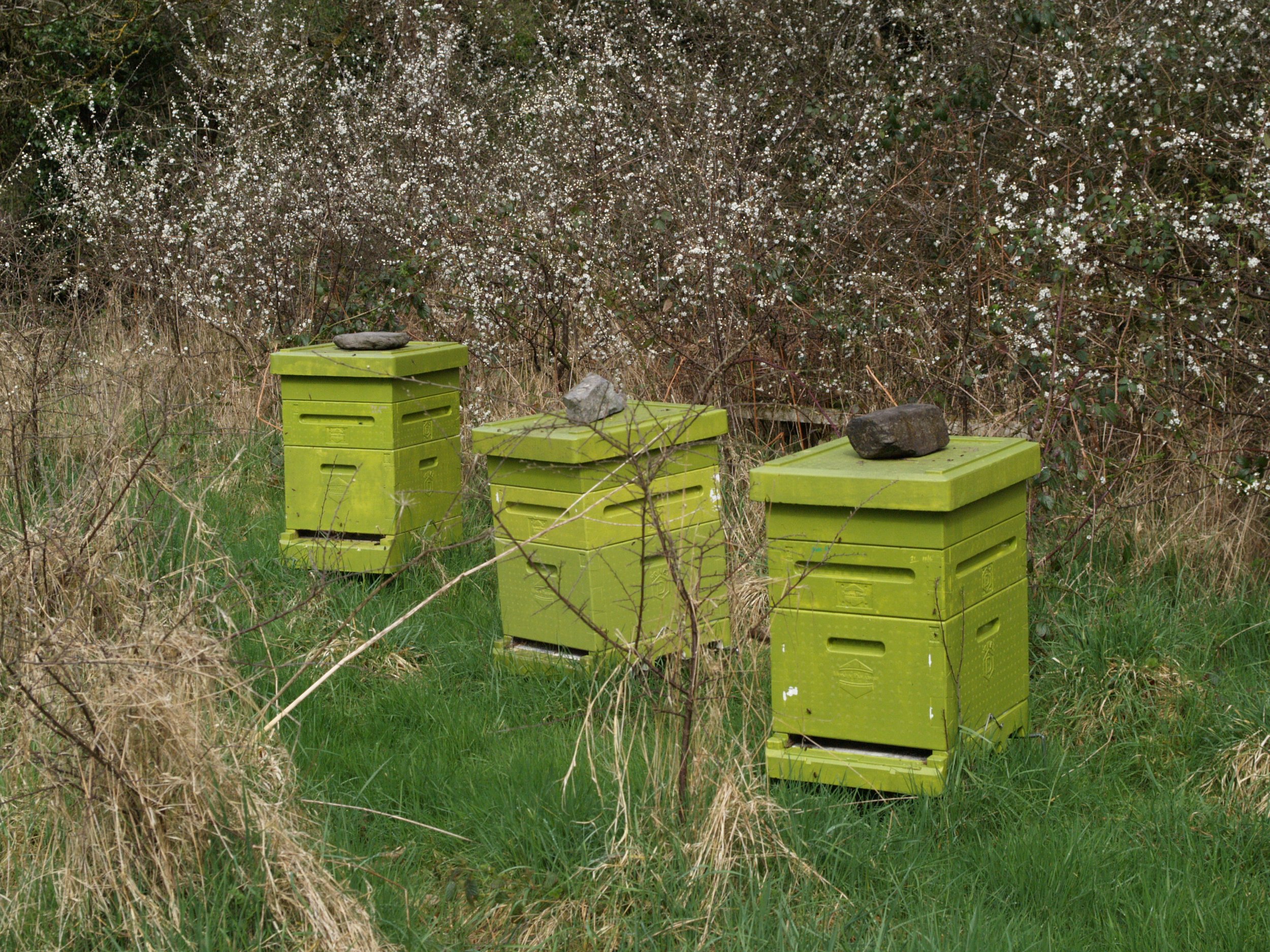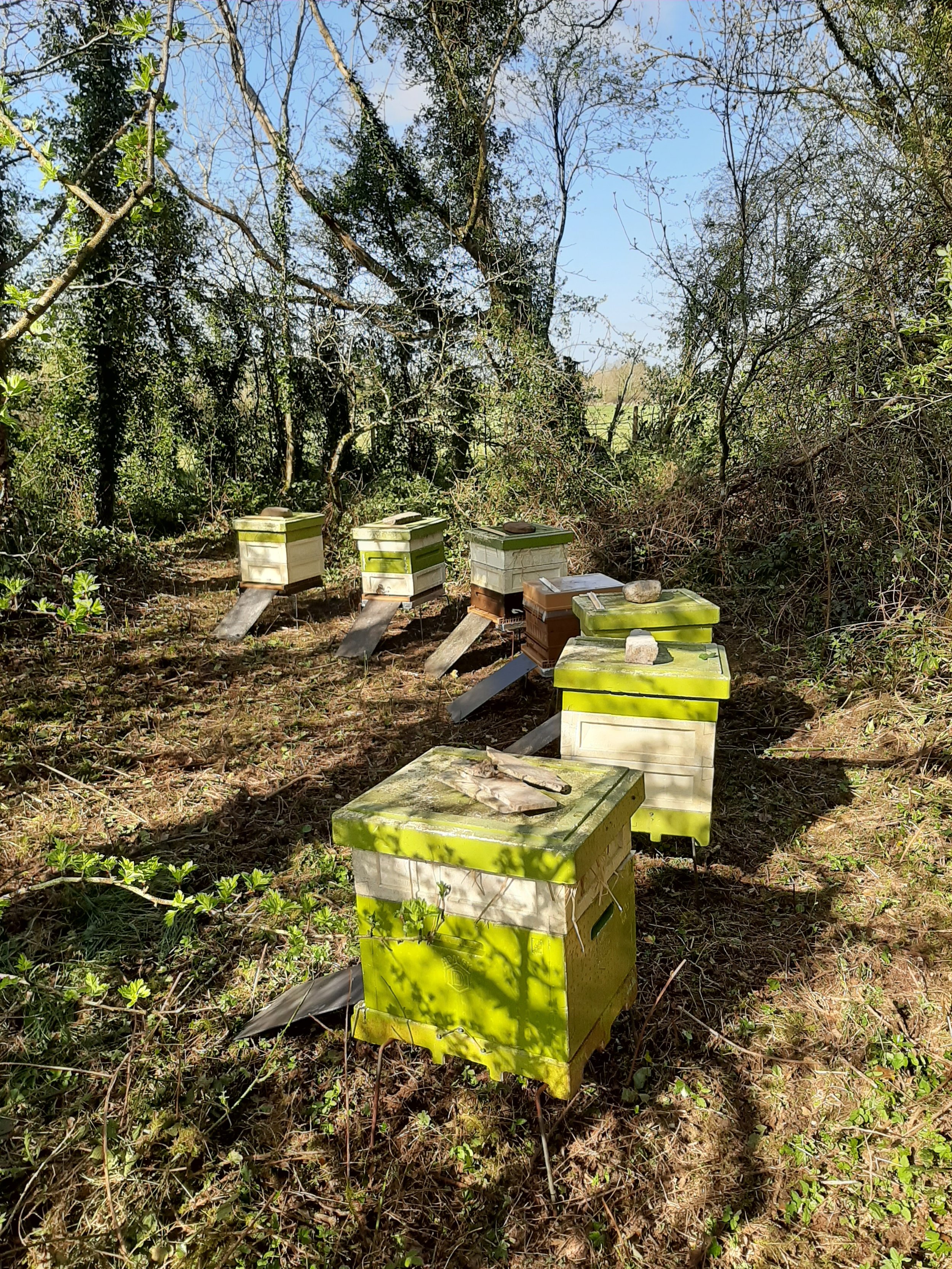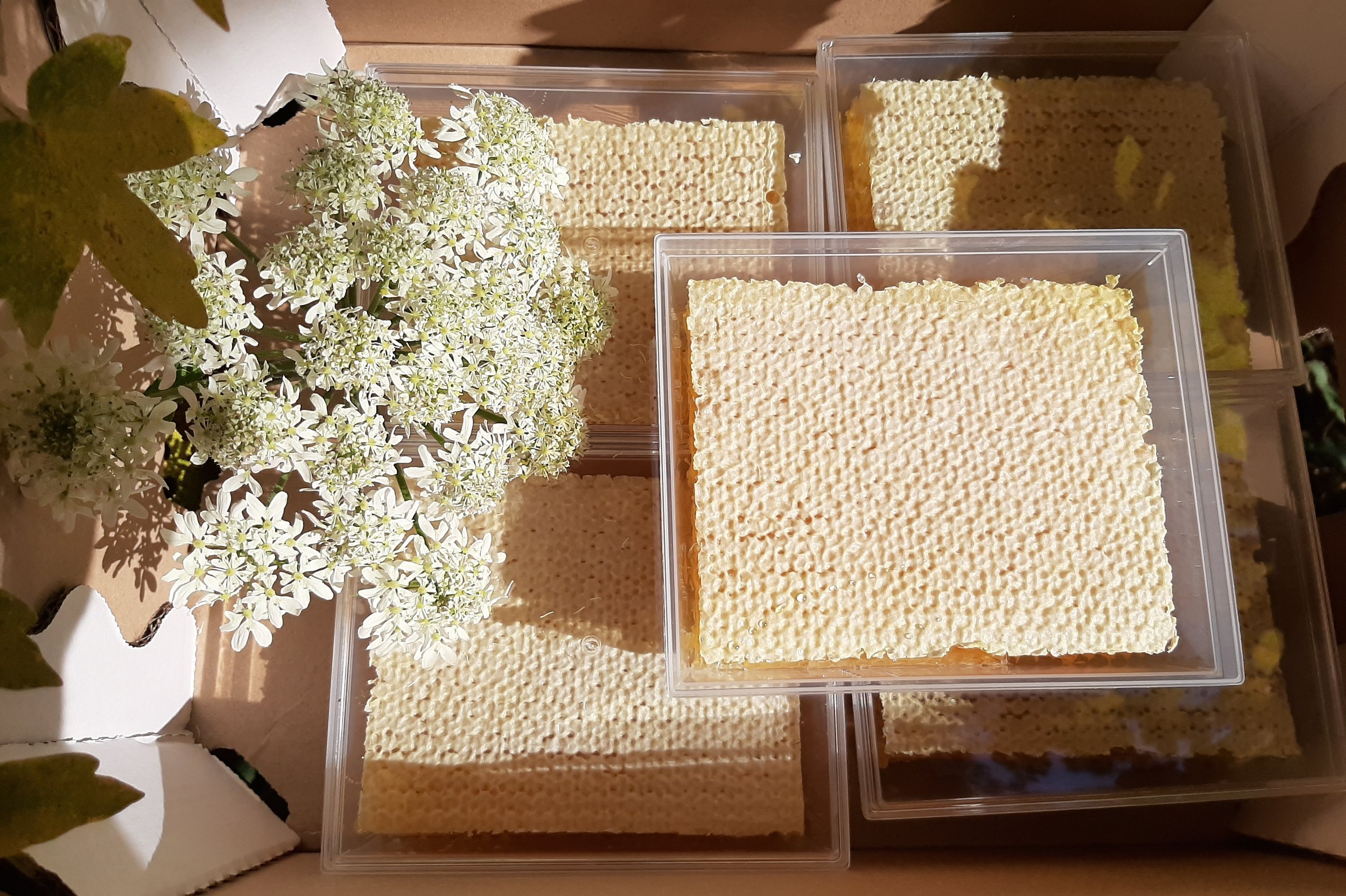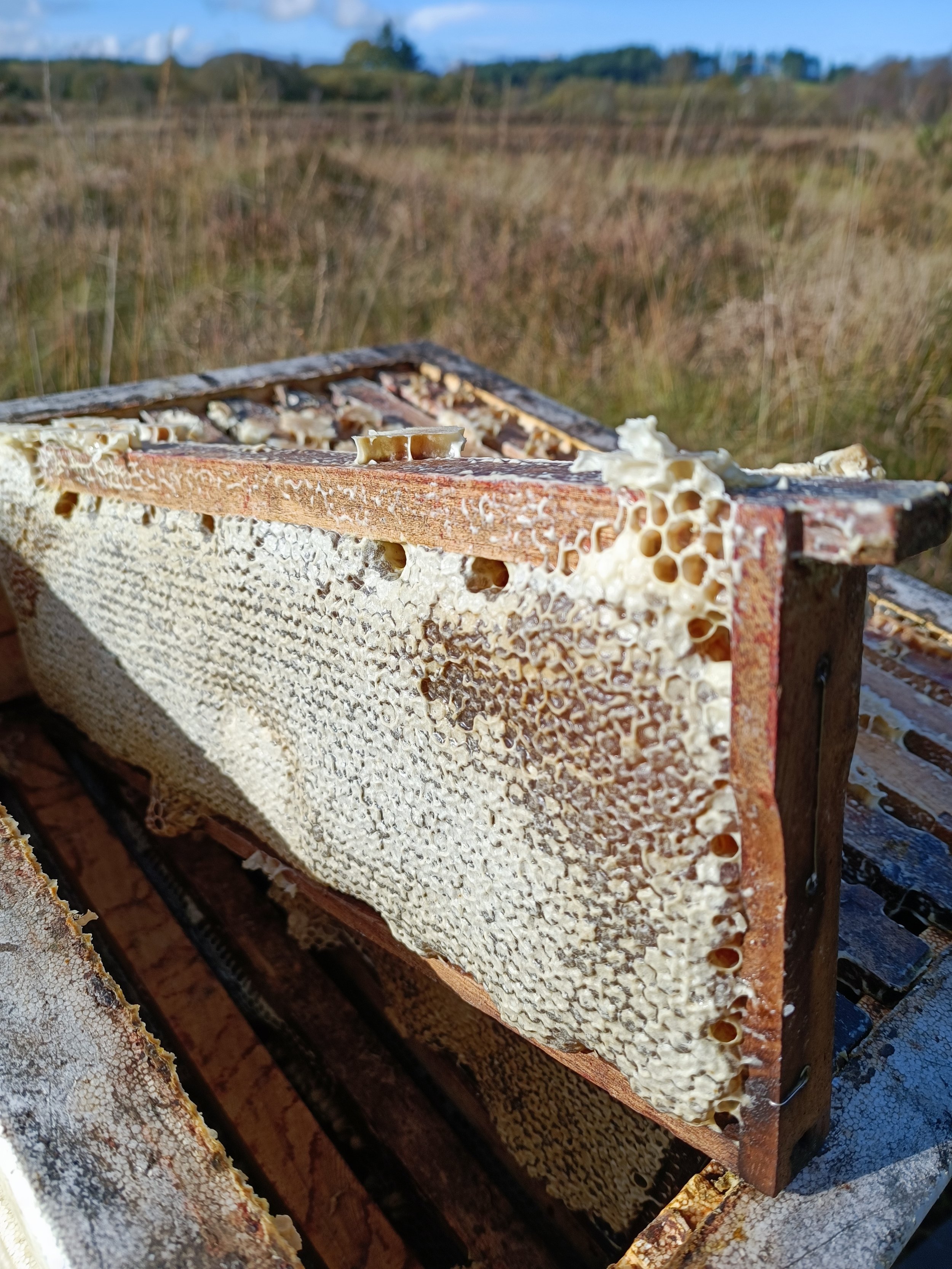Philip Sheridan uncovered: “I have been a beekeeper since I was a child.”
Philip Sheridan produces Wildwood Honey: “I just like working with bees.”
We love honey and use it daily in our muesli or porridge or just with sheep yoghurt. A small amount gives a kick to our salad dressing and it is a major ingredient in our wildflower lemonades. We have great beekeepers in Pat Finnegan from Cliffony, Charly Harvey from Rossinver and Philip Sheridan from Riverstown.
Philip Sheridan and Wildwood Honey
Philip is a leading light in producing raw honey from a single apiary. and also a great educator when it comes to communicating the benefits of honey.. Wildwood Honey is our favourite raw, natural honey. Produced exclusively by beekeeper Phillip Sheridan in the nearby localities of Leitrim and Sligo each jar of honey can be sourced back to the exact apiary and comes with a description of the main pollen sources. We have known Philip for quite some time and as we greatly admire his work we want to bring you the backstory in our blog “Philip Sheridan Uncovered”.
“I have been a beekeeper since I was a child.”
Philip’s first memory of bees goes back to when his father installed two hives in the garden. He tells us that “ as a small child, I went up and looked in the entrance and got stung on the head. I found out then I was a very good sprinter! Tens of thousands of stings later I’m still at it so it did not deter me.” He remembers his family holiday was the week long Federation of Irish Beekeepers course held at Gormanstown college which the Sheridans attended every year from 1975 until the early 2000’s
Philips Apiary
Philip has around 100 hives of bees kept in 10 apiaries from Coney island in Sligo to Lough Key in Roscommon. “Bees are open mated in their apiaries”, he explains, “ so reflect whatever is in the area and apiaries are chosen for proximity to clean environmental sources of nectar and microclimatic advantage for the bees.”
We ask what plants the bees collect pollen and nectar from and Philip points to the wide variety of energetically most efficient plants: “The main surplus nectar plants in this area are Dandelion, Sycamore, Hawthorn, Blackberry, Clover, Rosebay Willowherb and Ivy, but there are many other minor sources such as Blackthorn, Angelica, Bell Heather, Ling Heather, Holly etc.”
The bees collect pollen as a protein source says Philip: “ Gorse is a very good early season plant”, but there are numerous plants visited. We are curious, does he know which ones the bees have foraged? His face lights up: “The pollens can be superficially identified by the colour of the pollen loads. Some are very distinctive like the brick red of Horse Chestnut, lime green of Meadowsweet and dark blue of Rosebay Willowherb.”
“The products of the hive depend on how they are managed.”
Philip’s way of producing honey is highly regarded in the beekeeping world and we are curious what is special about the way he keeps bees: ”Bees totally depend on a clean environment to thrive so my first thought is always to look for areas where the foraging radius is as wild as possible.”
Are there threats? “The primary challenge for honeybees is the Varroa mite for which I have developed a combination of biotechnical management methods not requiring treatment of any kind.” Does he feed sugar in the Winter month? “No, I leave the bees their own honey to winter on and this is almost exclusively from Ivy. I don’t open the hives from October to March and find that this results in extremely strong colonies that use very little stores over winter. I often have to remove some Ivy honey in Spring to give the bees space to expand and this will be the case this year because hives are still very heavy.”
Is this way of working difficult? “This minimal interference method of management is possible if you work with bees for long periods of time and so understand how colonies work. This suits them as wild creatures and done correctly it is more akin to foraging than farming.”
Raw Honey
In recent times the term raw honey has come to dominate the market for really good honey. How does he see this: “There is no generally accepted definition of raw honey but what I take it to mean is honey that is constitutionally identical to its form as the bees store it.”
How does he produce honey for sale? “All Irish honey will have set solid by autumn and also does so in the colder parts of the beehive. The bees warm it up as the colony expands to the nest core temperature of 35 degrees centigrade which reliquifies it”, he explains, “I have a temperature controlled cabinet which replicates this process to prepare honey for sale.”
Flavours and source plants
But what about the different sources and flavours? “To separate different botanical source honeys extractions are carried out after each honey flow with honey from different apiaries being individually stored and labelled indicating general botanical source and provenance. With experience it is possible to distinguish by taste, aroma and colour some of the more distinctive ones such as Sycamore, Dandelion and Ivy.”
Benefits of eating raw honey
We ask about his take on the benefits of eating honey and how much should one eat? “Because there are so many botanical sources the benefits can vary widely”, he explains, “the herbal properties of the plant will be reflected in the nectar so can be used in a similar fashion. There is also an added benefit from the insect system in the form of enzymes such as glucose oxidase from the honeybee which is antibacterial.” He mentions Honeydew, an unusual honey which is becoming more common here and tells us “this is a tree sap collected first by aphids and then the honeybee so it benefits from two insect systems. It is also very mineral rich and one of the honeys commonly recommended for therapeutic use.”
What about the often mentioned medicinal effects of consuming honey? ”The glycaemic index of honey varies with source but is generally lower than sucrose so blood sugar levels rise and fall more slowly. The plant polyphenols present (Quercetin, Luteolin, Apigenin etc) are also anti-inflammatory and contribute to immune system modulation so will complement a generally healthy diet.”
Any recommendations how much one should eat? “How much is difficult to say but raw honey used as a substitute sweetener should be advantageous. From an apitherapy point of view, amounts as small as one teaspoon per day over an extended period were shown in a randomised controlled trial in Finland to be as effective as standard medication for pollen allergy.”
Local honey versus honey from around the world
Is it important to eat only local honey, we ask, and Philip says he is not too convinced: “This is to a certain extent a myth in my opinion. Eating local food is mostly important in that you have more control in verifying the quality of environmental source, production methods etc.”
What about honey from around the world then? “There are extremely good honeys from all parts of the world but these generally will never be imported, because, like any premium food, they will have a higher value and be in greater demand at source or from specialist food companies.” How does he rate imported honey? “Imported honey generally developed a bad reputation here because the bulk of imports represent the cheapest available and honey, like olive oil, is one of the most counterfeited foods in the world because of its relatively high value and composition.”
Honey against allergies?
The other belief is that local honey is beneficial for allergy because the local pollens in small amounts over time will constitute a form of immunotherapy. What is his belief, we ask? “This may have a very minor benefit but it has been shown in a study where pollen from a specific pollen allergy was added to a non-local raw honey that the raw honey without the pollen allergen had the same therapeutic effect when given over the winter prior to exposure.”
“It is almost certainly the plant flavonoids in honey like Quercetin that are immunotherapeutic”, he adds, “because they help stabilise mast cells which are part of the allergic response when they break down in those susceptible to allergies.”
The thrill of being a beekeeper
“Probably the freedom to work in the wildest places in all weathers.” Philip says, he always had a curiosity for nature. “I also just like working with bees.” He explains, that the smell of a hive is unique and mostly comes from plant resins which the bees work into a highly aromatic substance called propolis that defends the hive from microbes. “There are also distinctive smells from pollen and nectar particularly when the bees are drying out honey,“ he tells, “on evenings when there has been a honey flow during the day the air in the apiary can be heavy with the aroma of specific nectar as each hive converts to a mini dehumidifier (using wing power) to dry it down for storage.”
The Zen of keeping bees
And then there is also a very distinctive smell when the bees are not happy with something you are doing: “This alarm pheromone is an indication that it’s best to close up the hive quietly and come back another time.” When we ask about the challenges, that beekeeping presents, Philip is very philosophical: “I don’t generally perceive challenges! It is an enjoyable job governed by the seasons and the weather.“
His busy time starts soon, when the Whooper Swans leave in March and finishes when they return in October. “I just get on with it”, are his final words.
Where can you buy Wildwood honey?
The Wellness Shop in Sligo, Reggies Veggies at the Sligo Farmers Market every Saturday, Pink Clover Cafe in Drumcliffe and now Tempo Cafe in Ballysadare.
Here we have Philip Sheridan Uncovered:
What is your favourite food? Spanish Bean stew.
Finish the sentence: A beekeeper is never finished.
The country you travel for food: Ireland - mostly Boyle or Sligo if I need something exotic.
Three things you always have in your larder/fridge? Floury Spuds, Butter and Coffee
What is your most used gadget? T4
Do you read food books and which one do you come back to? Yes / Honey from a Weed by Patience Gray
Who is your inspiration (not necessarily from the food world): Ordinary people facing extraordinary challenge & my neighbour, the Right Honourable Sir Michael Alfred Bunn PPFA
What are you currently listening to? Townes Van Zandt - Waitin’ Around to Die
Something people don’t know about you? I’ve solved the longevity thing.
What will be hot in 2024? Immortality


